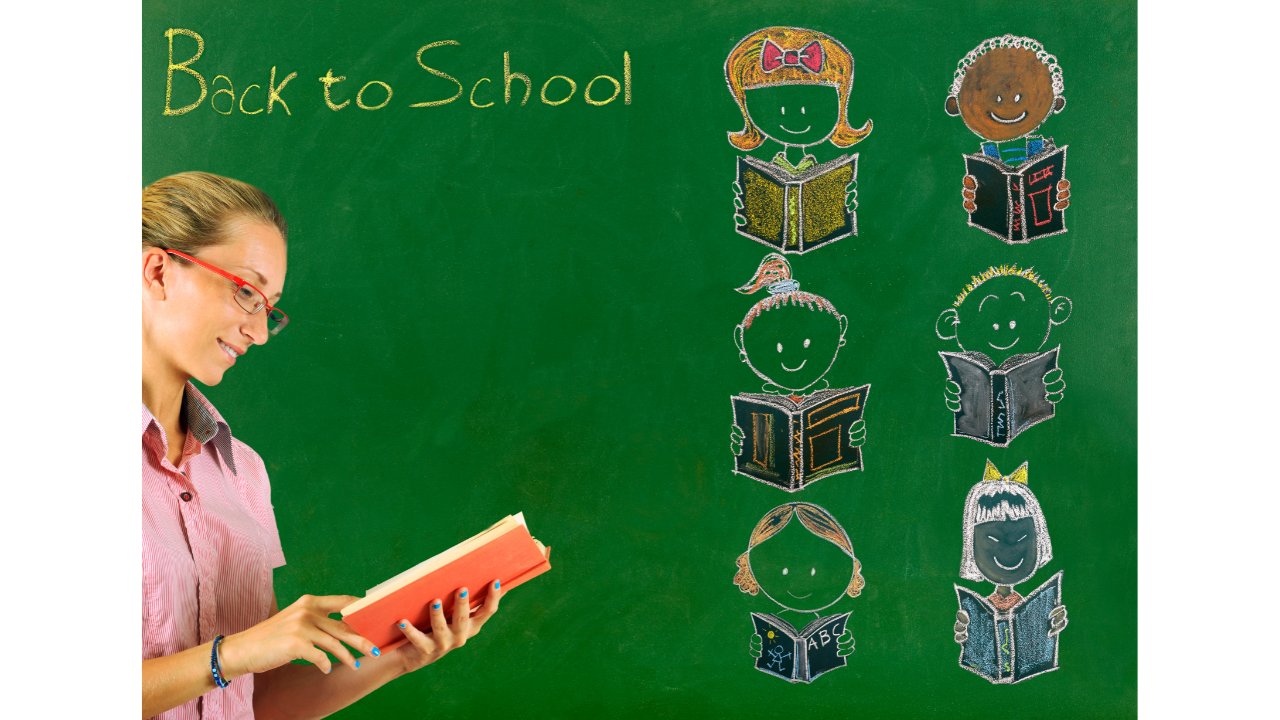Back to School Tips & Strategies for Teachers

Can you feel it? The unmistakable buzz of a new school year is in the air.
The familiar hum of classroom chatter, the scent of freshly sharpened pencils, the inquisitive eyes of pupils – it's that thrilling moment of standing on the threshold of countless possibilities.
We've all got our tried and true teaching methods, but each school year brings its own set of challenges and delights.
So, as we gear up to step back into our educational sanctuaries, let's chat about some handy 'Back to School' tips that could make this year smoother, more vibrant, and downright unforgettable.
Whether you're a first-timer or a seasoned pro, there's always something new to discover in our ever-evolving world of teaching.

Creating A Space That Speaks
When we talk about the classroom, it's not just four walls with a blackboard. It's a living, breathing space where minds interact, ideas flourish, and bonds are forged. The aesthetic appeal of a classroom plays a pivotal role in this.
Grace Negron is an English language arts teacher from Helen C. Peirce Elementary School of International Studies. She feels that creating a welcoming environment in the classroom is one of the most underrated aspects of a teacher’s training.
“I found it to be one of the most impactful elements in my classroom because I was making a space that pupils felt cozy, comfortable, and respected in, and that starts with how you decorate the space. “
The Warmth of Natural Light:
Nothing beats the soft glow of natural sunlight. If you're fortunate enough to have ample windows, make the most of them.
Position desks or communal tables in a way that they benefit from this light, making the space inviting and conducive for concentration.
Interactive Corners:
Gone are the days when learning was a one-way street.
Create corners or zones in your classroom that invite pupils to explore, be it a reading nook with interesting books or an interactive board with puzzles and challenges related to your subject.
These spaces should encourage pupils to move, engage, and collaborate.
First Impressions Really Matter
The initial weeks set the tone for the entire academic year. It's more than just diving into the syllabus; it's about setting the stage for a journey of discovery, camaraderie, and growth.
Search Institute research corroborates that pupils are motivated and goal-oriented when they feel a sense of belonging, safety, and acceptance.
Discovering Academic Wonders:
While it’s essential to cover the syllabus, the beginning should also inspire curiosity.
Consider integrating multimedia presentations, field trips, or guest lectures that align with your subject matter.
Make them see the magic that lies in the world of academics.
Recognising and Celebrating Individual Strengths:
Every student comes with a unique set of strengths and abilities.
Maybe it’s a knack for asking insightful questions, or perhaps it's a talent for drawing or storytelling. Create opportunities where they can showcase these talents.
It could be a quick 'About Me' presentation or a talent hour; the aim is to make them feel seen and appreciated.
Fostering Communal Bonds:
A classroom thrives when it operates like a community. Organise team-building exercises, group projects, or discussion circles where pupils can share, collaborate, and learn from one another.
These interactions sow the seeds of trust, understanding, and lasting friendships.
Building Bonds
Every thriving classroom has respect at its core. The way pupils perceive one another, interact, and collaborate largely depends on the foundation we lay early on.
Celebrating Diversity:
Our classrooms are vibrant mosaics of backgrounds, cultures, and individual stories. Introduce activities that highlight this beautiful diversity.
It could be as simple as a "Share Your Heritage" day or projects that allow pupils to explore various cultures.
Such activities underscore the message that every background enriches the classroom tapestry.
Spotlighting Uniqueness:
Every student is an individual with a unique set of talents and perspectives.
Hold sessions where they can share personal achievements or hobbies outside of the academic realm.
Recognising and celebrating these differences fosters a space where everyone feels acknowledged and valued.
Beyond the Books:
In the midst of academic lessons, we must also be attuned to pupils' emotional languages.
Reading Between the Lines:
Changes in academic output, participation, or social behaviour can hint at underlying struggles.
Observing and acknowledging these shifts can pave the way for timely interventions.
Trust is Key:
Ensure pupils feel safe voicing concerns, knowing they'll be met with understanding and confidentiality.
The Role of Support Systems
With growing academic and societal pressures, strong support mechanisms become vital. With the dip in this year’s GCSE results —it's a clarion call.
Delve beneath the surface to comprehend underlying causes, and tailor support strategies.
Championing Initiatives:
Programmes like the 'Mental Health Champions' aren't just an add-on; they are central to nurturing resilient pupils.
They provide the pupils with an outlet, coping tools, and much-needed support.
Support for Educators:
Teachers also face myriad challenges.
Embracing such programmes equips educators to manage their stresses, ensuring a healthier teaching environment.
Conclusion
Each new school year is a fresh chapter. Our classrooms aren't just physical spaces but centres of growth, curiosity, and mutual respect.
Balancing academic aspirations with the emotional well-being of our pupils and ourselves is essential.
As educators, we're equipped with both time-tested methods and new strategies to address every challenge. So, as we dive into this academic year, let's keep our focus sharp, our approach adaptive, and our enthusiasm high.
